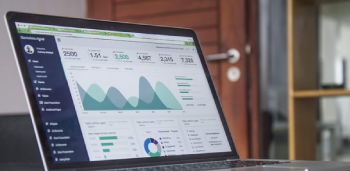Back Testing

Back testing is an important process in various fields, particularly in finance, trading, and algorithm development. It involves testing a trading or investment strategy using historical data to assess how it would have performed in the past. Here are some reasons why back testing is considered crucial:
1. Performance Evaluation: Back testing allows you to evaluate the historical performance of a trading or investment strategy. By analysing past results, you can gain insights into how effective the strategy has been and whether it meets your performance goals.
2. Risk Assessment: It helps in assessing the risks associated with a particular strategy. By examining past drawdowns and losses, you can better understand the potential downsides of the strategy and make adjustments to mitigate risks.
3. Strategy Refinement: Back testing provides a means to fine-tune and optimize your trading or investment strategy. By observing how the strategy performed under various conditions, you can make adjustments to improve its profitability and risk management.
4. Statistical Validation: It offers a statistical basis for evaluating a strategy. Back testing allows you to quantify the strategy’s performance using metrics like return on investment (ROI), Sharpe ratio, and maximum drawdown, providing a more objective assessment.
5. Simulation of Real-World Conditions: Back testing attempts to simulate real-world conditions by using historical market data. This helps traders and investors understand how their strategies would have fared in different market scenarios, including bull and bear markets.
6. Confidence Building: It can help build confidence in a strategy. If a strategy consistently performs well in back testing over a long period, it may provide assurance to traders and investors that it’s worth implementing in live trading.
7. Strategy Development: Back testing is an integral part of strategy development. Traders and quants use historical data to build and refine trading algorithms and models. Without back testing, it would be challenging to develop robust strategies.
8. Avoiding Overfitting: Back testing can help in identifying overfitting, which occurs when a strategy is overly tailored to historical data but does not generalize well to future conditions. By examining a strategy’s performance on out-of-sample data, you can check for overfitting.
9. Educational Tool: It serves as an educational tool for traders and investors, helping them understand the complexities of markets and the implications of different trading decisions.
10. Compliance and Regulation: In some cases, regulatory authorities may require financial institutions to conduct back-testing as part of risk management and compliance processes.
It’s important to note that while back-testing is a valuable tool, it has limitations. Past performance does not guarantee future results, and markets can change, sometimes abruptly, due to unforeseen events. Therefore, back-testing should be complemented with other risk management techniques and forward testing (paper trading or live trading with a small stake) to ensure the strategy’s viability in the current market conditions.
Tools
There are a number of different back testing tools on the market. Some are much better than others and are far easier to use. For those that want a relatively easy tool I recommend Naked Markets software. You can watch the videos I have made which demonstrates how to use it below. They offer a $20 discount to my community, you can get that by using this link https://www.naked-markets.com?coupon=nmpivottrd
How to use the Naked Markets back testing software
The following videos walk through using the Naked Markets back testing software.